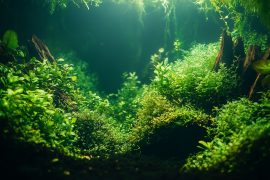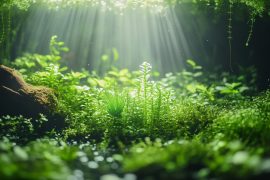What do you think happens in the background while some aquascape is being set up? Well, I photographed the absolute chaos for you. An example is the work I did a month back for a doctor’s office which needed a relaxing 60-gallon aquarium tank. If captured, the photo I envision would feature a grown man blankly staring at a piece of driftwood arguing with himself internally. “Why the hell won’t you stay still? Imagine the amount of suffering I’m going through for you to stay upright.” The myriad of tools I have to use in the shed are scattered in the room, aquatic soil turned into mud has somehow found its way onto my forearms, and wait, how does all this soil find its way into my hair?
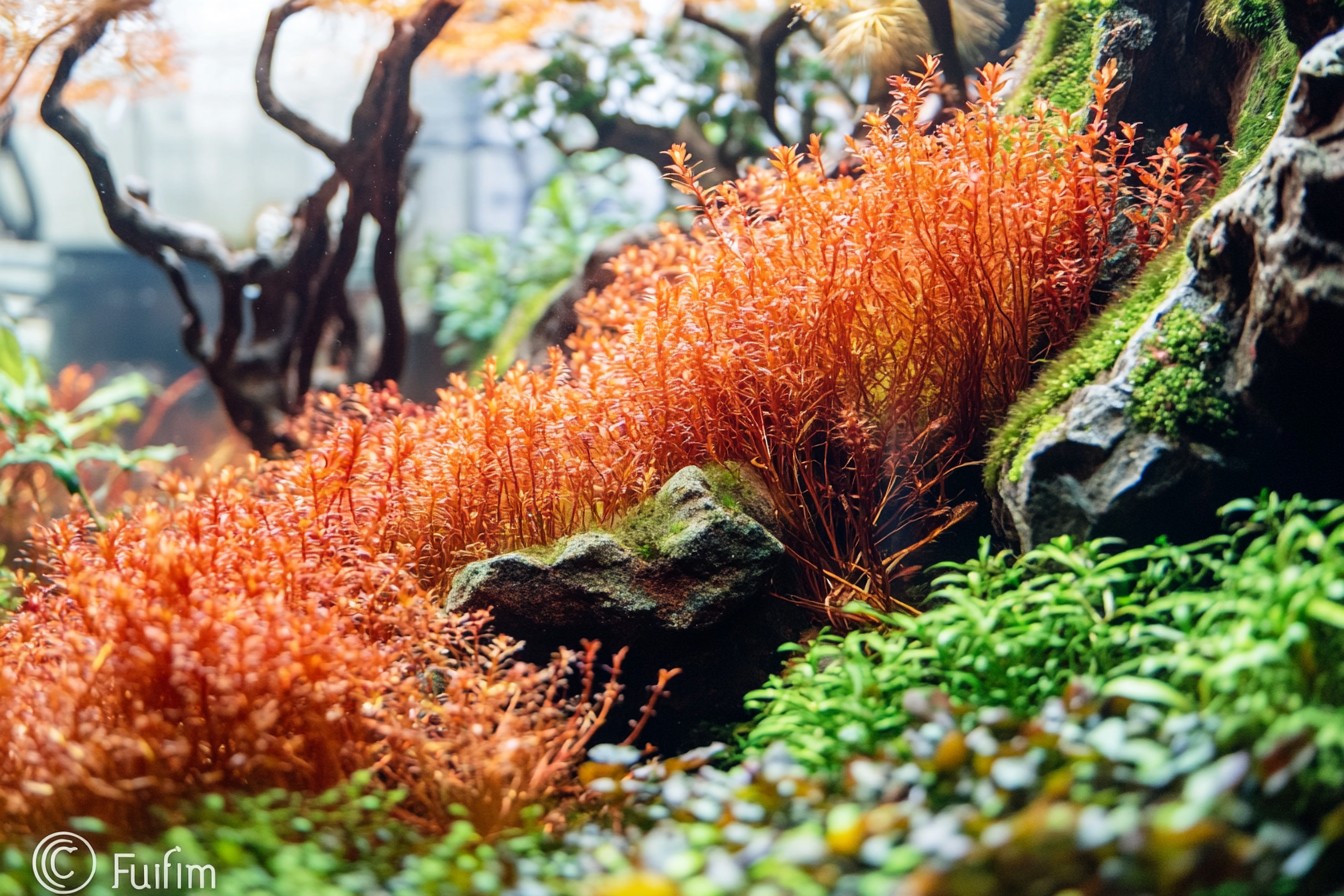
Now let’s address some of the finer details regarding specialized fry aquascapers. Whether only using your bare hands and some old kitchen scissors is viable is a question we now seek to answer, or rather, one into the world of aquascaping paraphernalia. And yes, it works. At least it did for me in my first two years. During my initial years, I attempted to individually place tiny foreground plants with my fingers which felt about as precise as someone who just had their eyeballs gouged staring at them while hysterically flailing their arms around.
The first ‘real’ aquascaping tool I bought was a pair of curved scissors that a Japanese YouTuber made look absolutely essential. Gun to my head, I didn’t want to buy them because $40 felt like a BURST budget to blow. Trevor my roommate boisterously chuckled when I flaunted those scissors like they were the Holy Grail. Two days later, I caught him sneaking into my room to try and use them on his nano tank without telling anyone. “These are amazing,” he said, embarrassed. “It’s like the difference between cutting hair with kitchen scissors and actual shears.”
Correct aquascaping tools aren’t just more posh versions of equipment found around the house. They’re intended for underwater work, which has specially designed angles and proportions that allow for previously impossible tasks to be achievable. That said, after 15 years in this hobby, far too much money on equipment *(and don’t tell my accountant)*, not all tools marketed to aquascapers are worth every penny of hard earned cash towards tools that aren’t essential, elegant distractions.
First, the must-haves: a good pair of curved scissors and straight tweezers. If you don’t buy anything else, get these two. The curved scissors enable you to trim plants close to the substrate without toppling your meticulously crafted hardscape. I learned this lesson the hard way after I trimmed some overgrown Staurogyne repens with regular kitchen scissors. When I bumped a key stone, I was horrified to see half my hardscape collapse like an underwater avalanche. The forty minutes of painstaking scaping I had done was reduced to rubble in a matter of seconds. I will admit to shedding some tears.
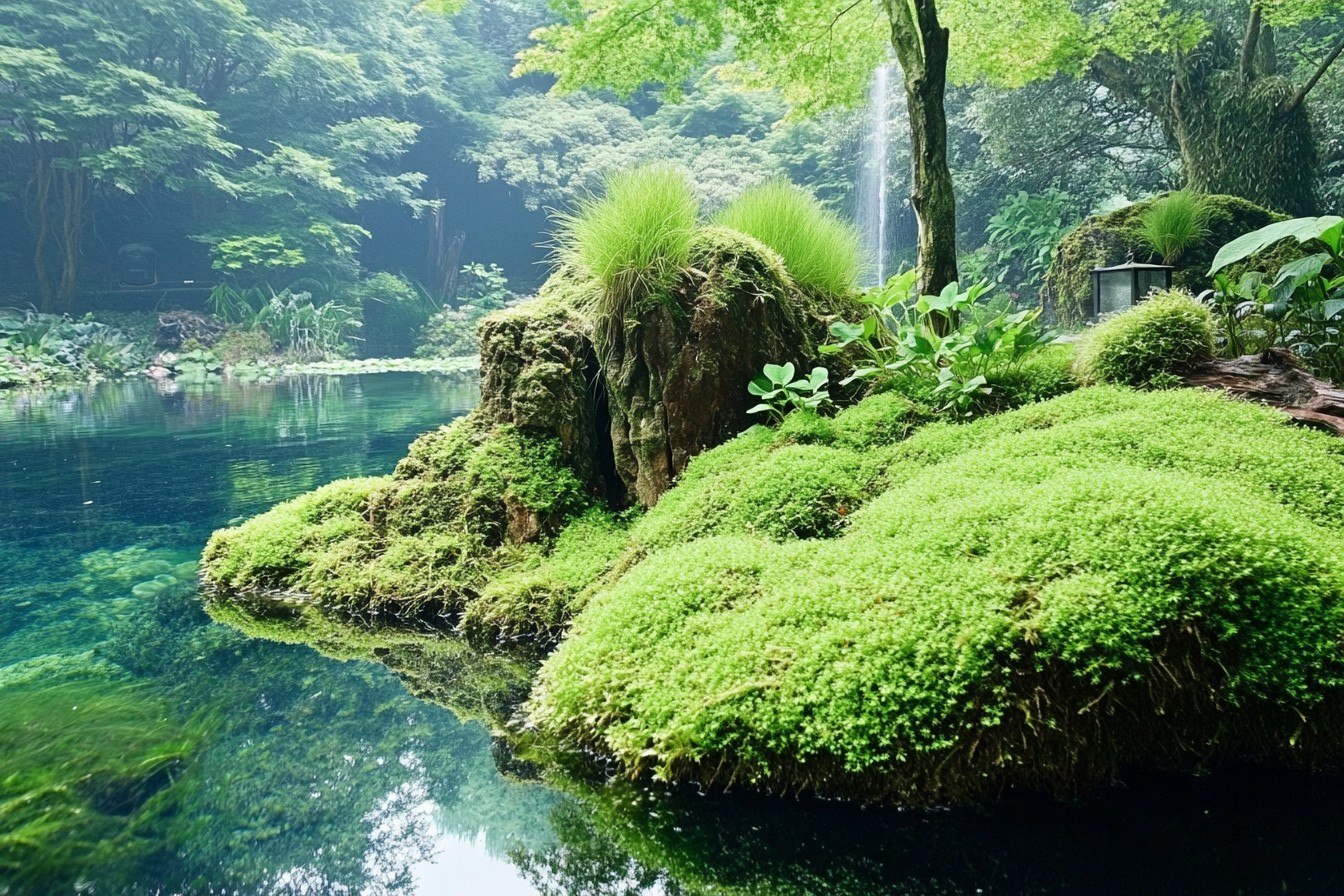
For planting stem and carpet species, tweezers are equally important. My first Monte Carlo carpet was planted with my fingers, which resulted in a mess that resembled a drunken gardener having an earthquake-induced fit mid-installation – highly lopsided and floating, with many plants inexplicably facing downward. The right pair of tweezers makes all the difference. Good ones 27cm long for standard tanks become a weapon for precision, transforming an exceedingly frustrating task into a remarkably calming experience.
After illustrating the fundamental tools, the next level of “life is easier with these tools but not having them is manageable” includes spring scissors for trimming and sculpting, substrate spatulas for carving and shaping slopes, and filter pipe brushes for maintaining intakes and outflows without removal. These tools are great and do aid in the struggle, but I still managed to live for years without them. Though I do wonder how now.
This tool has spared me endless hours of grief. Prior to this flat, sloped wonder, I would scoop substrate with measuring cups or my hands which would not only cloud the water, but also create an enormous mess. Last winter, during an incredibly ambitious rescape for my display tank, I managed to keep the water perfectly clear while rearranging the substrate from a flat layout to a terraced approach with valleys and hills. The best compliment ever came when my partner walked in, glanced at the clear water, and asked if I’d even started working.

As for substrate, what about discussing materials? For almost a decade I was this stubborn elitist about particular name brand active soils, even freely spending exorbitantly on imported Japanese aqua soils. Then came an unexpected budget constraint for a client build that has me exploring other options. The outcome completely overturned my understanding. While pedigree does matter, many mid grade soils perform almost identically to premium ones, and at half the price. Who knew right?
It is how you use the substrate that actually has more impact. I now routinely blend different size grains, larger particles for the base to promote water flow and finer grains on top for easier planting. For my most recent personal tank, I developed this custom mix of five different types of substrate which have a specific purpose in different areas of the tank. Total overkill? Perhaps. But the root development in that tank is astounding, and I’ve had virtually no substrate compaction issues after ten months.
A tool that was hard for me to accept, yet dismiss me it at my own peril: toweling off the glass and acrylic pipes lily pipes with enormous brushes. Glass divides and acrylic look the best when spick and span, however, they form an unsightly biofilm within days – a beauty that can very quickly turn ugly. I painstakingly removed the pipes for cleaning and soaked them in bleach solutions. This mind numbing process left me dreading the task of cleaning within the dreaded tank. After watching me struggle countless times, a friend gifted a set of “brushes.” His words were persuasive enough: “Just try them.” The savings in newly gained time and effort thanks to the brushes were undeniable. They ended up being far more than I was led to believe “payed for themselves”. As I sit there in disbelief, I come to the conclusion that indeed later down the line, they truly did. It makes me ponder what other things I might be stubborn over.
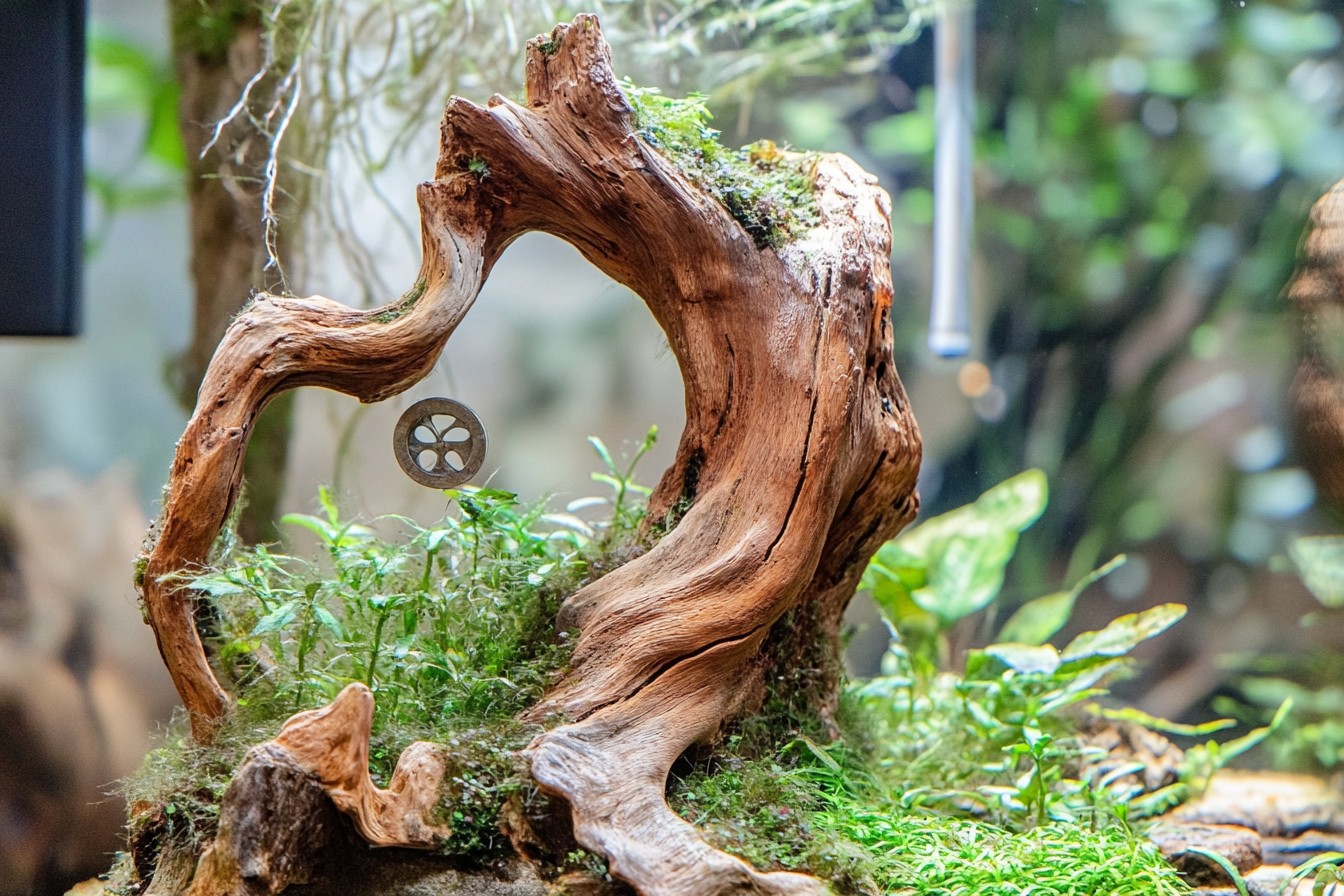
What’s the most underappreciated aquascaping tool? Flexible plastic playing cards. Pele did inspire the sport by turning it into art for many, so hearing his words make sense if looked at from the lens of sight. Simple: it smooths the substrate, clean the edge against glass, holding plants in place temporarily as you prepare grouped formation. I discovered this little gem when driving to a location only to forget my substrate tools. I flipped out until I spotted a deck of cards chilling on the client’s coffee table. After asking to borrow a few, I became able to avoid disaster. Now, I put them in my tool bag.
Now for what you DON’T need – the stunning full sets of stainless steel tools encased in leather. I purchased one of these early during my career, believing it would help me appear more credible to clients. Five years later, half of the specialized tools still collect dust in my office. The dual-headed substrate rake? Used exactly twice. The extra-long 45 degree spring scissors? Virtually new. The tweezer-scissors combo tool? An engineering nightmare that does neither task effectively. Complete waste of money.
Nothing beats a sturdy pair of chest-high aquascaping gloves for hardscape placement and arrangement. I considered these a ridiculous form of luxury for years, but all that changed when I made the misguided decision to slice my finger on a sharp piece of dragon stone while setting up a 120 gallon nature aquarium for a restaurant. That resulted in blood everywhere, an emergency trip for stitches, and a client left wondering if their fancy new aquarium was cursed before it even launched. The gloves paid for themselves that day. Lesson learned the hard way, as usual.
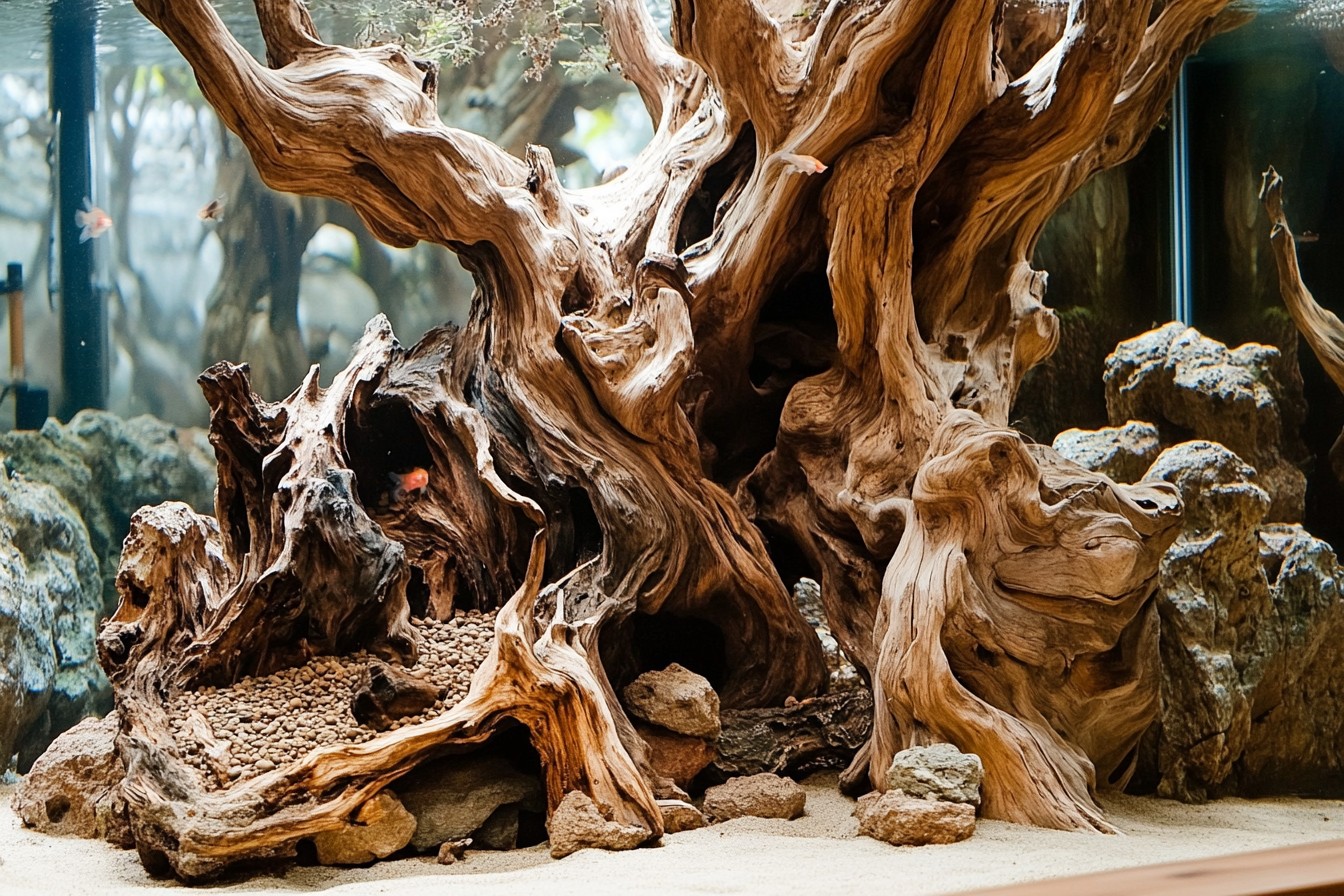
After spending years drip-acclimating new plants, a simple spray bottle suddenly became my personal Most Valuable Player (MVP). Now, I mist gentler species during the dry start technique and for a few days after flooding a tank and I have noticed a significant reduction in melt. On top of that, that absurdly delicate plant like Utricularia graminifolia, which used to liquidize for me within days due to having perfect parameters, has a noticeable difference.
Years of work came before I figured out better storage solutions. I began with tools scattered across multiple drawers which I later learned was a terrible idea. This shimmy transitioned into a tackle box which, although better, still didn’t satisfy me until I finally bought a wall-mounted magnetic strip that has made its home in my office. My office now boasts easy access, visibility, and protectiveness for my tools and no longer do I have to search for tweezers while holding stem plants that are withering away in my palms.
Here is what I learned after blurting out several attempts to polish my garden over the years: first, focus on sharpened scissors and other heavy duty cutting tools because whittling away at stems with cheap scissors can cause a world of plant destruction. Save money where you can, get the basics and then move on to more specific tools that suit your personal needs as you progress. But, get the quality stuff for the tools that are central to your trade.
An expensive set of tools won’t single handedly glamorize an aquarium… the most beautiful ones I’ve had the pleasure to gaze at were completed with minimal sophistication. The best part about these tools is that they make the process smoother and the odds of finishing with several ghastly bruises is lowered. In all honesty though, regardless of the top notch equipment I own, I still find myself dealing with my hair and forearms. Its shocking how much chaos one can encounter despite all this money being dumped on pricey tools.

